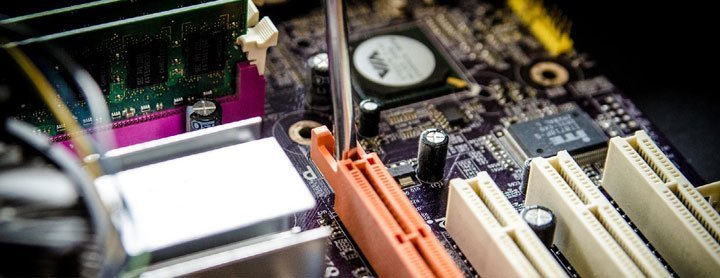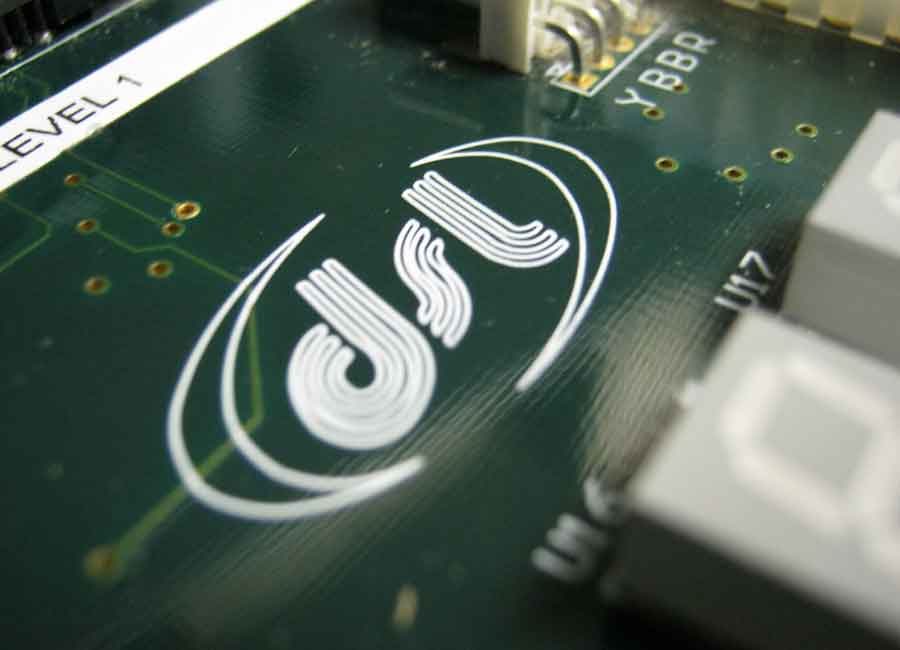

Common Analogue and Digital Circuitry for Circuit and PCB Design
In this article we will look at some of the most common analogue and digital circuitry used in electronic circuits and PCB design (printed circuit board design). The aim is to give you an overview and understanding of how they work, the advantages and disadvantages of an analogue versus a digital circuit, and when each might be appropriate in circuit design.
Overview of Analogue and Digital Circuit Systems

Analogue and digital electronic design covers a wide range of potential applications, from simple domestic appliances to complex industrial machinery. In general, an analogue circuit is used for processing continuous signals, while a digital circuit is used for processing discrete signals.
There is however a great deal of overlap between the two disciplines, and circuit design can integrate both analogue and digital systems.
Analogue and digital electronic design are both important disciplines in the world of electronics. Each has its own strengths and weaknesses, and each is suitable for different types of applications. In many cases, the best results can be achieved by using a combination of analogue and digital techniques.
By understanding the basics of both disciplines, you will also be in a better position to understand how circuits that meet the specific needs of your application can be designed.
The difference between analogue and digital electronic design
One of the most common types of analogue circuit is the operational amplifier, or op-amp. Op-amps are used in a wide range of applications, from signal conditioning to active filtering. They are usually configured as part of a feedback loop, with the output signal being fed back to the input. This feedback arrangement gives op-amps their unique properties, such as high gain and high input impedance.
Digital circuits, on the other hand, are usually constructed from logic gates. Logic gates are used to implement Boolean functions, which can be used to model any kind of digital circuit. The most common type of logic gate is the AND gate, which takes two input signals and produces an output signal that is high only if both of the input signals are high.
Analogue circuitry is typically used for a signal that is continuous in nature, such as audio or video. However, analogue systems can be more difficult to design and debug, and are usually not as precise as the design of digital circuitry.
Digital circuitry is typically used for a signal that is discrete in nature, such as computer data. Digital circuits are generally more robust than analogue circuits and can be more easily replicated.
Digital and analogue electronics both have their advantages and disadvantages, and which one is best for a particular application will depend on the required results.
Advantages of Analogue Circuits
In electronic design, an analogue circuit is one that uses voltage or current levels that vary continuously with time to represent signal amplitude. This is in contrast to digital circuits, which use a discrete set of signal levels, usually two voltages or currents, that represent signal amplitude.
Much of the modern world runs on digital circuitry, but analogue circuitry still has its advantages. One key advantage is accuracy. Analogue signals are continuous, which means they can be more accurately represented than digital signals, which are discrete. This makes analogue circuitry ideal for applications where precision is essential, such as in medical equipment or scientific instruments.
Another advantage of analogue circuitry is responsiveness. An analogue signal can change rapidly in response to input, while digital signals take a finite amount of time to change state. This makes analogue circuitry well suited for applications where speed is important, such as in audio processing or video transmission.
In summary, analogue circuits offers advantages in accuracy and responsiveness that make them a valuable technology in a large number of applications.
Advantages of Digital Circuits
Digital electronics have a number of advantages over analogue electronics in certain applications.
One is that the output is more precise than analogue circuits. This is because the signal levels in a digital circuit are discrete, so there is no need for the level to be estimated.
As a result, digital circuits are often preferable for applications where an exact reading is required, such as in communication systems.
One of the most significant advantages is that digital circuits have high noise immunity. This means that they can produce a more accurate representation of a signal, even in hostile environments.
Another advantage of digital circuits is that they are more robust than analogue ones. Because of this, digital circuits are often preferable for applications where high reliability is required, such as in control systems.
Digital circuits also have the advantage of being easier to design and debug than analogue circuits. This is because the circuitry in a digital circuit is typically much simpler than that in an analogue circuit.
As a result, digital circuits are often preferable for applications where ease of design and debugging is required, such as in microcontrollers.
Finally, digital circuits usually require less power than analogue circuits. This is because a digital signal can be represented using a lower voltage than an analogue signal.
Because of this, digital circuits are often preferable for applications where low power consumption is required, such as in circuit boards for portable electronic devices.
PCB Design Guidelines for Analogue Circuits

Analogue circuits are used in a wide range of electronic devices, from radios and TVs to phones and computers. They are also found in many industrial and scientific applications.
As their name suggests, analogue circuits are designed to process analogue signals. This means that they can handle continuous voltages and currents, as well as varying signal amplitudes and frequencies. When designing analogue circuits, it is important to consider the following PCB design guidelines.
First, the circuit must be able to operate over a wide range of temperatures. This is because analogue circuits are often exposed to extreme temperature conditions, either in industrial or automotive applications.
Second, the circuit should be designed for low noise operation. This is because any noise introduced into the circuit will be amplified, which can lead to signal distortion.
Third, the circuit should be designed for low power consumption. This is particularly important if analogue circuits are used in portable electronic devices, where battery life is a key concern.
Finally, the circuit should be designed for high reliability. This is because analogue circuits are often used in mission-critical applications, such as in medical equipment.
PCB Design Guidelines for Digital Circuits
Digital circuits are used in a wide range of electronic devices, from microcontrollers and FPGAs to phones and computers. They are also found in many industrial and scientific applications. As their name suggests, digital circuits are designed to process digital signals. This means that they can handle discrete voltages and currents, as well as digital data. When designing digital circuits, consider the following PCB design guidelines.
First, the circuit should be designed for low energy consumption. This is because digital circuits are often used in portable electronic devices, where battery life is a key concern.
Second, the circuit should be designed for high speed operation. This is because digital circuits are often used in high speed applications, such as in communication systems.
Fourth, the circuit should be designed for high reliability. This is because digital circuits are often used in mission-critical applications, such as in control systems.
Electronic circuits for your application – digital or analogue?

Each type of circuitry has its own advantages and disadvantages. Analogue circuitry is generally more accurate and responsive than digital circuitry, but it is also more complex and expensive.
Digital circuitry, on the other hand, is relatively simple and inexpensive, but it is less accurate and responsive than analogue circuitry. As a result, the choice of which type of circuitry to use depends on the specific requirements of the application.
Analogue circuitry is typically used for amplifiers, filters, and other signal-processing applications. It is also well suited for data acquisition and control systems.
Digital circuitry, on the other hand, is often used for logic circuits and memory devices. It is also frequently used for communication applications such as data transmission and signal processing.
When choosing between analogue and digital circuitry, it is important for the designer to consider the specific needs of the application.
For example, if the goal is to create an amplifier that distorts the input signal in a pleasing way, analogue circuitry would be the better choice. On the other hand, if the goal is to create a circuit that counts the number of times a particular button is pressed, a digital circuit would be more appropriate.
In many cases, a combination of both analogue and digital systems are used to create a circuit that meets the specific requirements of the application. Although in general, analogue circuitry is more appropriate for signal-processing applications while digital systems are better suited for communication applications, there are many applications where both types of circuitry can be used.
Conclusion
Analogue and digital electronic design are both common in modern circuit and PCB layout design. Ultimately, the choice of circuit will depend on the specific needs of the project, and sometimes a combination of both digital and analogue electronic circuits is appropriate.
With an in-depth knowledge of the types of circuits and the advantages and disadvantages of analogue electronics versus digital electronics, as well as a wealth of experience in both analogue and digital electronic design, DSL can balance the advantages of each to design a solution that is optimal for your needs. Call us today to discuss your next project.

